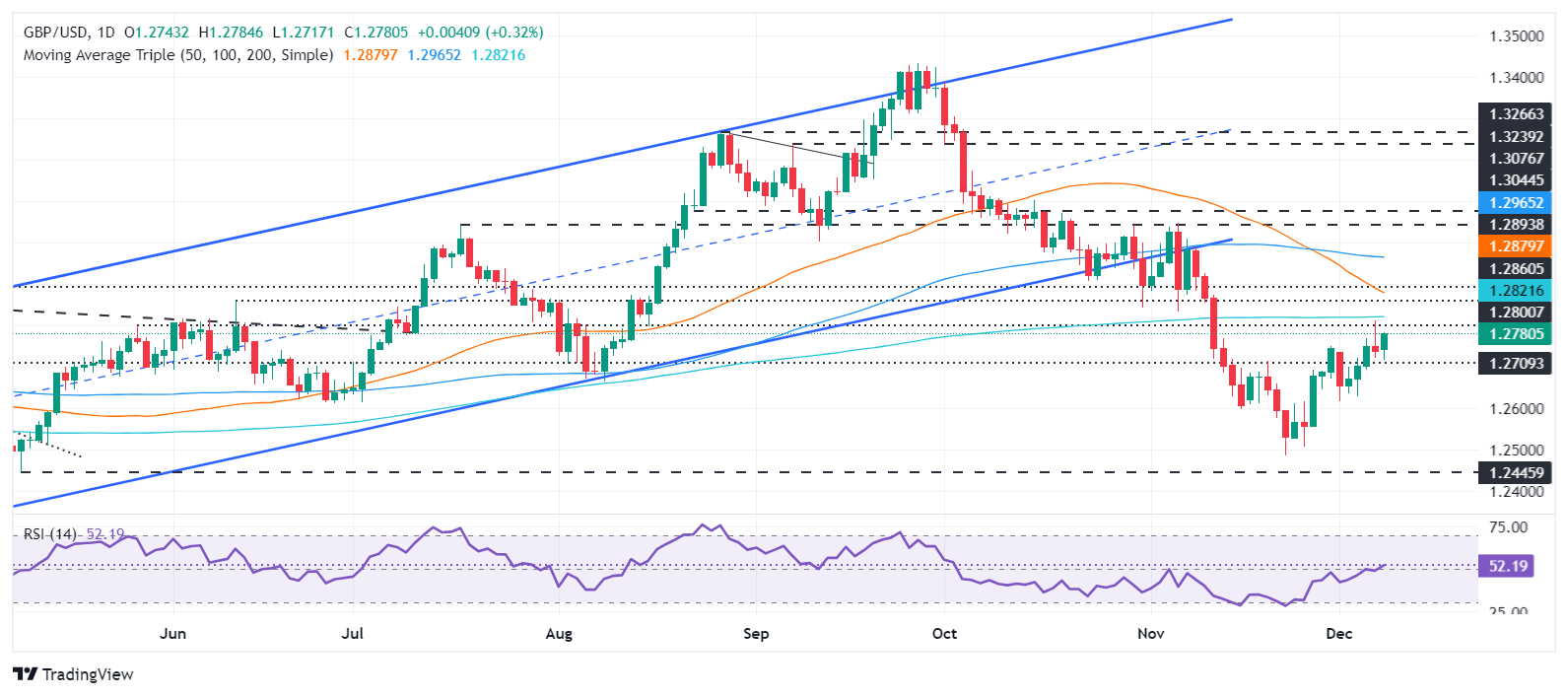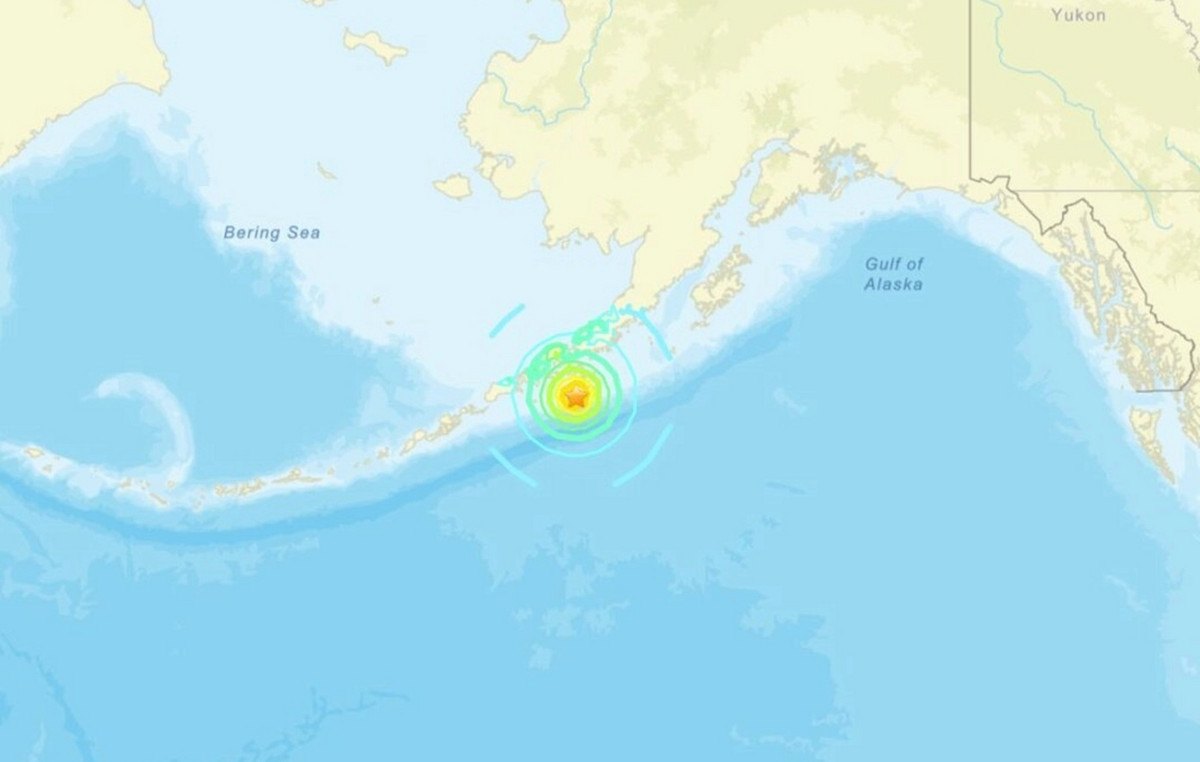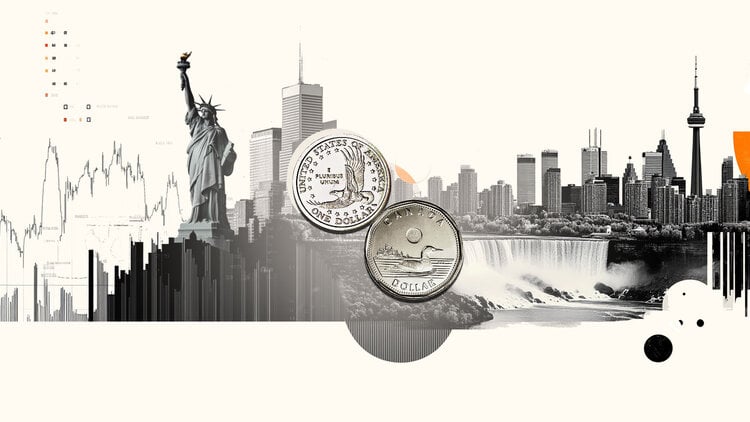- GBP/USD rises to 1.2780, supported by improved risk appetite and technical indicators pointing to the upside.
- Buyers target resistance at 1.2800; Breaking through this could expose additional key levels, including the 200-day SMA at 1.2820.
- Downside risks remain with possible support at the December 2 low of 1.2616 and the November 22 low of 1.2486 if declines resume.
The British Pound posted gains of 0.33% against the US Dollar on Monday, despite the lack of a catalyst other than an improvement in risk appetite. GBP/USD is trading at 1.2780 after bouncing from daily lows of 1.2716.
GBP/USD Price Forecast: Technical Outlook
GBP/USD is making an upward move after losing more than 4% following the US presidential election, which saw the victory of President-elect Donald Trump. Momentum changed to bullish, as shown by the Relative Strength Index (RSI), which turned bullish and pointed upwards.
Buyers must clear 1.2800 before challenging the 200-day SMA at 1.2820. If broken, the next stop would be the 50-day SMA at 1.2878, 1.2900, and the 100-day SMA at 1.2963.
On the contrary, if sellers keep GBP/USD below 1.2800 and drag it towards 1.2700, it will put downward pressure on the pair. A break of the latter will expose the December 2 low of 1.2616, followed by November 22 main support at 1.2486.
GBP/USD Price Chart – Daily
The British Pound FAQs
The British Pound (GBP) is the oldest currency in the world (AD 886) and the official currency of the United Kingdom. It is the fourth most traded foreign exchange (FX) unit in the world, accounting for 12% of all transactions, averaging $630 billion a day, according to 2022 data. Its key trading pairs are GBP/ USD, which represents 11% of FX, GBP/JPY (3%) and EUR/GBP (2%). The British Pound is issued by the Bank of England (BoE).
The most important factor influencing the value of the Pound Sterling is the monetary policy decided by the Bank of England. The Bank of England bases its decisions on whether it has achieved its main objective of “price stability” – a constant inflation rate of around 2%. Its main tool to achieve this is the adjustment of interest rates. When inflation is too high, the Bank of England will try to control it by raising interest rates, making it more expensive for people and businesses to access credit. This is generally positive for sterling, as higher interest rates make the UK a more attractive place for global investors to invest their money. When inflation falls too much it is a sign that economic growth is slowing. In this scenario, the Bank of England will consider lowering interest rates to make credit cheaper, so that companies will take on more debt to invest in projects that generate growth.
The data released measures the health of the economy and can affect the value of the pound. Indicators such as GDP, manufacturing and services PMIs and employment can influence the direction of the Pound.
Another important piece of information that is published and affects the British Pound is the trade balance. This indicator measures the difference between what a country earns from its exports and what it spends on imports during a given period. If a country produces highly in-demand export products, its currency will benefit exclusively from the additional demand created by foreign buyers seeking to purchase those goods. Therefore, a positive net trade balance strengthens a currency and vice versa in the case of a negative balance.
Source: Fx Street
I am Joshua Winder, a senior-level journalist and editor at World Stock Market. I specialize in covering news related to the stock market and economic trends. With more than 8 years of experience in this field, I have become an expert in financial reporting.








